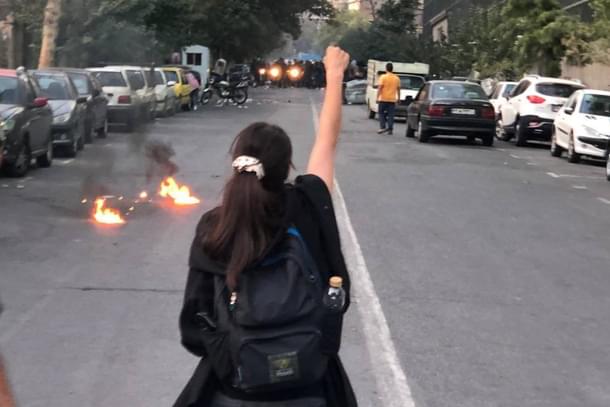World
Anti-Hijab Protests: Anger In Iran Intensifies After 16 Year Old Girl Is Beaten To Death For Refusing To Sing Islamic Regime's Anthem
Swarajya Staff
Oct 18, 2022, 02:51 PM | Updated 04:05 PM IST
Save & read from anywhere!
Bookmark stories for easy access on any device or the Swarajya app.


Crackdown on anti-hijab protests in Iran has now led to the death of an Iranian schoolgirl. She was beaten to death by Iranian security services for daring to say no, when she was ordered to sing the pro-Islamic regime anthem.
The incident occurred in the province of Ardabil, when her school was raided. Her death has led to a further intensification of anti-hijab protests around Iran.
Her name was Arsa Panahi. She was just 16 years old, studying at Shahed girls high school in Ardabil, as per the information disclosed by Coordinating Council of Iranian Teacher's Trade Associations.
The law mandating hijab was adopted back in 1983, four years after Iran witnessed the Islamic revolution. It mandates that all women must wear a hijab in public, even if they are not Muslims and not Iranian.
When the security forces entered the 16 year old's school, they demanded that all the students sing an anthem dedicated to the Islamic regime's Supreme Leader Ayatollah Ali Khamenei.
When the students refused to sing this anthem, the Iranian security forces started beating the students. Many students had to be hospitalised and Arsa Panahi died in the hospital, due to the injuries she sustained from the beatings.
Unsurprisingly Iranian officials have denied that the actions of security forces led to the 16-year-old's death. They are parading around a supposed "uncle" of Arsa who is claiming during prime-time broadcasts that she died as a result of long term illness.
In case this sounds similar, well, it sounds similar because the Iranian Islamic regime trotted out a similar line, when talking about the death of 22 year old Mahsa Amini.
Amini died as a result of being beaten to death, whilst she was in the custody of Iranian police. A forensic "investigation" conducted by the Islamic regime concluded that Amini died due to a longterm illness she suffered from and not as a result of blunt force injury.
A wide scale crackdown on Iranian schools began last week when videos of schoolgirls refusing to wear hijab emerged on the social media, along with chants of 'death to the dictator', 'end the Islamic regime', 'mullahs get lost'.
Iranian security officials are barging into classrooms to violently crackdown on the protestors.
After news of 16 year old Panahi's death spread, more students have started joining the protests, in different provinces.
A 19-year-old girl named Nargis (name changed for safety) has said to The Guardian that she will continue to protest. Nargis has been hit with rubber bullets on her back and legs for protesting against hijab.
“I don’t have a single relative in Ardabil, but with this brutal crackdown on our sisters, who were just 16 years old, they’ve awakened the whole nation. We never knew we were so united – across the Baloch regions as well as the Kurdish regions. The world has heard about Nika, Sarina and Asra, but there are so many other nameless children who we know nothing about," she said.
More than 233 people have died protesting against the regime. Girls who are protesting against hijab, are being sent off the psychiatric wards.
Iran’s Education Minister Yousef Nouri, in an interview with Shargh, an Iranian newspaper, confirmed that women who are burning their hijab, are indeed being sent off to psychiatric institutions.
The violent crackdown on protests began in Sanandaj, as per a report from Arab News. Sanandaj is the capital of Kurdistan province, which is the province Amini originally hailed from.
The Iranian regime is relying primarily on the Basij, to crackdown on the protestors. The Basij are paramilitary volunteers who are extremely loyal to the Islamic revolution.
The Basij was established in 1977, shortly after the Islamic revolution. Basij’s goal is to eliminate internal threats to the Islamic revolution. Basij has a membership of around 1 million people.





